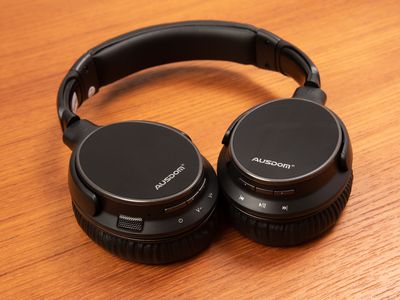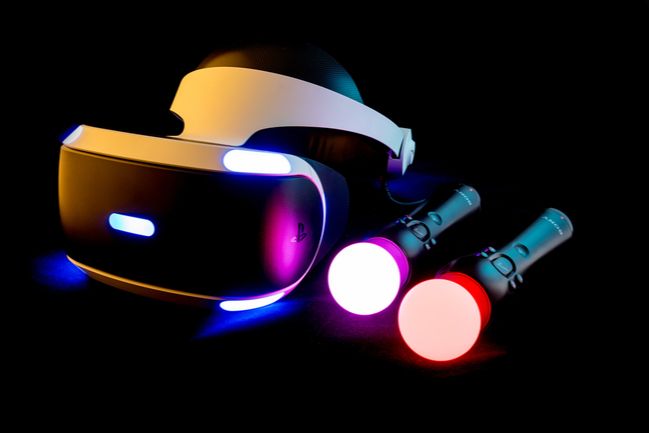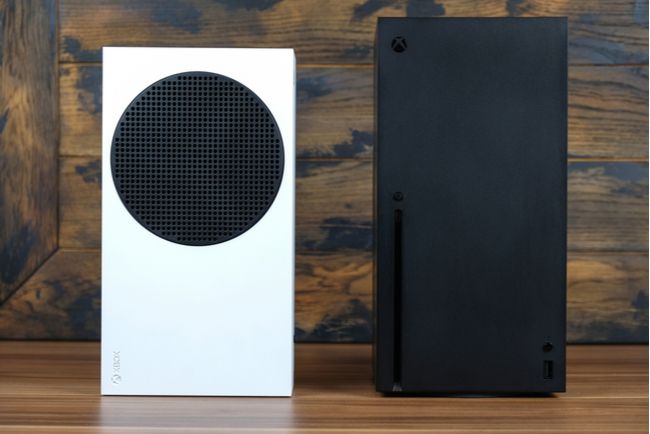
Exploring the Absence of Virtual Reality in Xbox Series X: A Comprehensive Analysis

Exploring the Absence of Virtual Reality in Xbox Series X: A Comprehensive Analysis
Quick Links
- PlayStation’s Console VR Dominance
- All the Pieces Are There
- Windows Mixed Reality’s Uncertain Status
- What’s Holding Xbox VR Back?
The PlayStation VR is the only virtual reality solution for console gamers today and, with the PSVR 2 for the PlayStation 5 rumored to be just around the corner, there’s still no answer from the Xbox camp. Why are the Xbox Series X, Xbox Series S, and Xbox One all missing VR support?
PlayStation’s Console VR Dominance

Travers Lewis/Shutterstock.com
The PSVR has crossed the five-million units sold mark, which represents quite an install base. It’s a relatively small percentage of the 100+ million PS4 that have flown off shelves over the years, but thanks to strong support from Sony there has been no shortage of titles to play .
Related: The Best VR Games for Oculus Quest, PC, and PSVR
It also helps that the current PSVR can be used with the PS5 (albeit with a free adapter ) and the release of the PSVR 2 is imminent at the time of writing. Based on what we know about the PSVR 2 so far, it’s likely to bring console VR up to modern VR standards and introduce cutting-edge technologies such as foveated rendering and headset haptics. We’re also likely to see both VR-only PS5 games and mainstream games that also have a VR mode option in the vein of Resident Evil 7 and Gran Turismo Sport.
In short, the future of PlayStation-based VR looks bright, so why isn’t Microsoft’s Xbox platform staking its claim in this market?
All the Pieces Are There
If the issue isn’t that the market is too small, could it be too much technical work? This would be a reasonable guess if it wasn’t for the fact that Microsoft already has all the in-house technology it needs to add VR to Xbox.
We’re not talking about Microsoft’s extremely high-end Hololens project here, although having that technology in the war chest doesn’t hurt. Instead, it’s Windows Mixed Reality that’s important in this context.
Briefly, Microsoft developed an entire ecosystem that includes a software API, home environment, and hardware standards open to third-party manufacturers. The company also wrote translation software such as Windows Mixed Reality for Steam, allowing SteamVR games to work with WMR hardware. Microsoft also secured deals with hardware makers such as Samsung and Lenovo.
This means you could get a compatible headset at different price points. Headsets such as the Samsung Odyssey+ represented the luxury end of the range and headsets from the likes of Lenovo offered a mainstream experience at competitive prices.
Keep in mind that consoles like the Xbox Series X and S are, at their very cores, Windows computers. Microsoft could port technology from desktop Windows operating systems to the Xbox. So let’s recap what Microsoft already has to hand:
- Windows-compatible VR software.
- Windows-compatible VR hardware that’s open to third-party creators.
- Games on Xbox (such as Star Wars Squadrons ) that have VR modes on PC.
We’d never suggest that bringing a VR experience to Xbox is easy, cheap, or straightforward. There are many moving parts involved in maintaining a console ecosystem, after all. However, from an outsider’s perspective, it appears as if all the major work is done.
Windows Mixed Reality’s Uncertain Status
There’s some important context to know when it comes to Microsoft’s history with desktop VR. The Windows Mixed Reality initiative started out strong and many of the headsets received good reviews, but soon there was a curious lack of drive from Microsoft. At the outset, Windows Mixed Reality looked like it could be a central pillar of computing going ahead, but the initial head of Steam seems to be gone for the moment.
In 2019 Road to VR noted that Windows Mixed Reality headsets were disappearing from the Microsoft store. At first, this looked like a potential lull before a new generation of WMR headsets hit the market, but that wave of new WMR hardware has yet to appear. Some headsets, such as the HP Reverb G2 are indeed WMR compatible, but this isn’t being emphasized. If you visit the WMR page you’ll mainly find SteamVR titles taking center stage.
We don’t know if Windows Mixed Reality will suddenly get a renewed push, perhaps following the launch of Windows 11. Curiously, it appears that there may be a Windows 11 Mixed Reality edition, though it’s not clear whether this is aimed more at the high-end Hololens headsets.
What’s Holding Xbox VR Back?

If Microsoft has any plans for Xbox Virtual Reality, they are keeping it a close secret. In March of 2021, IGN Italia reported a mysterious error message on Xbox that suggested VR-related data was buried somewhere in the console’s code. Microsoft was quick to explain that this was a localization error. To date, they have given no indication that VR is on their roadmap for Xbox. Trying to explain why Xbox doesn’t seem to have VR in its future moves us into the realm of mild speculation.
The most reasonable answer is that Xbox simply has its hands full at the moment. With two new consoles in high demand, a cloud gaming service getting off the ground, and a new subscription service in the form of GamePass, Xbox has a lot going on.
it may also simply be that the internal structure at the company doesn’t place those working on VR and those working on Xbox outside of each other’s orbit.
Alternatively, PlayStation may be the main reason Xbox has cooled on the idea of Xbox VR. Given the large PSVR install base and the upcoming PSVR 2 release, it’s a mountain that may not be worth climbing just yet.
A more optimistic explanation may be that Microsoft is waiting for Sony to reveal their entire VR hand. This second-mover advantage served them well with the Xbox One X, where the company could ensure that their mid-generation console update outperformed Sony’s PlayStation 4 Pro.
Xbox head Phil Spencer may also be a major reason we haven’t seen much traction. Back in 2018, CNET reported that a purported Xbox VR headset had been put on hold. Spencer is quoted in another CNET article from 2016 expressing the sentiment that Xbox VR would only be worth doing if they could add something “unique .” The various interviews and quotes from Spencer over the years seem to show that he’s personally not thrilled by the current state of VR or convinced that Xbox players are interested in the technology.
Whatever Microsoft’s plans for virtual reality on Xbox may be, there seems little doubt that VR is a growing segment. Whether PC VR, standalone VR, or console VR it seems unlikely that VR will fade away the way it did in the 90s.
Also read:
- [New] Finding the Right Sound Top ASMRists Advice
- [New] Tips for Creating Stunning Slow Motion Content on Instagram
- [Updated] The Art of Piecing Together Digital Images
- [Updated] The Essential Guide to Zooming with Gmail Emails Professionally
- Best Free Video Apps on Multiple Desktops for 2024
- Correct the Boot Device Cannot Be Found BSOD Problem in Windows 11 with Easy-to-Follow Pictorial Steps
- In 2024, How to Stop My Spouse from Spying on My Honor Magic 6 Lite | Dr.fone
- In 2024, Unparalleled Background Music Compilation
- Introducing ChatGPT: How Microsoft's Language Model Is Shaping Communication
- Pro Snipping Made Simple The Top 5 PC Screen Capture Apps Revealed for 2024
- Selecting the Perfect Day for Podcast Drops for 2024
- The Complete Blueprint for Optimizing Data in Adobe's Cloud Realm for 2024
- Transferring Your Entire Windows Ebootable_image From One Machine to Another
- Understanding Transient Suppression via Audacity for 2024
- Title: Exploring the Absence of Virtual Reality in Xbox Series X: A Comprehensive Analysis
- Author: Mark
- Created at : 2024-12-29 16:59:09
- Updated at : 2025-01-02 16:29:59
- Link: https://some-guidance.techidaily.com/exploring-the-absence-of-virtual-reality-in-xbox-series-x-a-comprehensive-analysis/
- License: This work is licensed under CC BY-NC-SA 4.0.